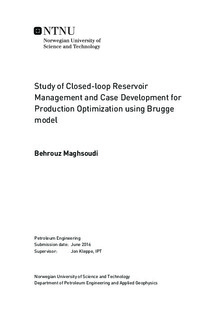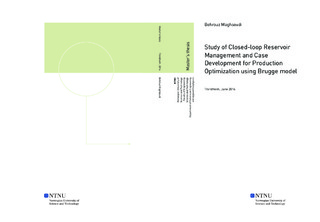| dc.description.abstract | Improving reservoir performance is at the heart of all reservoir management process. Reservoir optimization enhances decision making which leads to decreased total costs and increased recovery. In practice, manual optimization approaches are widely used for reservoir management, however, they are time-consuming and include many trial and errors. Additional research has been initiated in order to find more systematic optimization approaches.
This work consists of three major parts: (1) a general description of main concepts and tools in reservoir management (2) detailed case description of the developed cases and presentation of the model performance of each and, finally (3) presentation and discussion of the results of each case optimization.
Due to growing interest in applying mathematical optimization techniques to reservoir management, in this thesis we develop interesting and relevant petroleum cases for production optimization, and applying mathematical optimization techniques. Our development process consists of the model conversion of Eclipse 100 model to E300 model. The project is converted into Petrel RE in order to enable design of desired cases such as new wellbore trajectories, create segment models and development strategy for each case. In this process, parameters such as the initial oil saturation, geological features, rapid petrophysical variations in the formation, different well placements, and rate allocations were taken into consideration.
Several cases with different characters were created of which three were selected, based on their attractiveness for production optimization. During this process, factors such as wells setting (horizontal and vertical wells), and field performance (e.g. oil production rate, final oil recovery, water injection and production) were taken into consideration. The cases were developed for research at Petroleum Cybernetics Group at NTNU and are to be used for research and educational purposes.
The cases considered were used to test the built-in optimizer in Eclipse for production optimization. For each case an optimization problem was designed in order to improve the model performance in terms of increased maximization of oil production and the net present value. The implementation of the optimizer was successful and the model performance improved significantly. In case 1, the NPV of the segment was improved by 93\% by increasing the total oil production, and decreasing the amount of produced and injected water. In case 2, the total oil production was improved by employing the available water injection. The final oil recovery increased by 10\%. In case 3, the NPV of the segment increased by 12.7 \% due to the handling of the high water production in the field. | |

